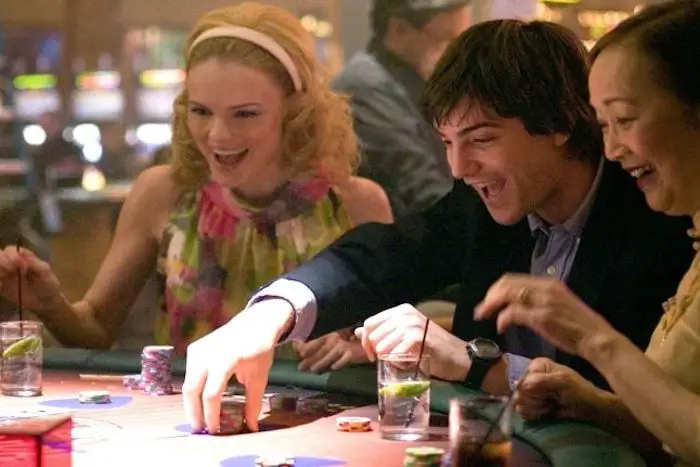
When considering the iconic directors of Hollywood’s golden era, few film scholars would automatically place Rouben Mamoulian at the top of the list. Yet Mamoulian’s film canon is among the most remarkable of that period. As a director, he helmed such classic Hollywood productions as “Applause” (1929), “Dr. Jekyll and Mr. Hyde” (1931), “Love Me Tonight” (1932), “Queen Christina” (1933), the landmark Technicolor feature “Becky Sharp” (1935), “Golden Boy” (1939), “The Mark of Zorro” (1940) and “Blood and Sand” (1941).
Mamoulian was also highly active on Broadway, directing the premiere production of three works that reshaped the American theater: “Porgy and Bess” (1935), “Oklahoma!” (1943) and “Carousel” (1945).
So why isn’t Mamoulian the subject of greater critical appreciation? That’s a fine question, and film scholar David Luhrssen is doing his part to raise a greater awareness. Luhrssen’s new book “Mamoulian: Life on Stage and Screen” (published by University Press of Kentucky) provides an in-depth consideration of Mamoulian’s remarkable contributions to stage and screen. Film Threat talked with Luhrssen about this extraordinary creative artist.
What inspired you to write a book about Rouben Mamoulian?
Everybody is familiar with Rouben Mamoulian’s major achievements in film and theater, but hardly anyone has heard of Rouben Mamoulian. It’s a puzzling injustice, given his successes, and I can only venture to guess that his eclecticism worked against him as well as his lack of interest in being a celebrity. Film historians couldn’t categorize him and the public forgot him.
Up to now, Mamoulian has been the subject of only two books: Tom Milne’s excellent 1960s collection of essays on his movies and a disagreeable 1980s biography that tried to interpret him according to a Freudian formula. In writing my book, I wanted to understand the director in terms of his ethnic origins and education, and interpret his work in the context of his own aesthetics and the popular culture of his day.
I have to add that I usually dislike reading fat, 500-page biographies and didn’t want to write one. An inundation of small facts can obscure, rather than illuminate, the subject. As a biographer, I want to know how the culture shaped a person and how the person shaped the culture, not what he had for breakfast or who he had sex with—unless these things had some influence on his work.
In Mamoulian’s case, there were scattered rumors of Hollywood romance in the gossip columns of the 1930s, followed by an enduring and childless marriage. It was easy to focus on his work in film and theater because his personal life wasn’t littered with scandal or notoriety.
Mamoulian had directed an extraordinary skein of remarkable films, beginning with “Applause” in 1929 and stretching through “Blood and Sand” in 1941, but then he seemed to lose his touch with “Rings on Her Fingers” in 1942 and then only completed two films in the next 15 years (the 1948 “Summer Holiday” and the 1957 “Silk Stockings”). What went wrong with his Hollywood career?
Mamoulian was generally well respected and liked by his casts and crews, who found that he was respectful of their talent, encouraging their best instincts and was willing to hear out their ideas. His relations with studio heads and producers were more prickly. He approached each movie with a particular aesthetic design in mind. He considered himself an artist. He did not see film as inferior to theater or other older art forms, but found in movies the potential for implementing his ideas of creating a “total work of art.” As a result, he was always seen as “difficult,” a problem his bosses overlooked as long as he was turning a profit. When he began to stumble at the box office, attitudes changed.
Unlike some of his peers, Mamoulian wasn’t driven to stay in the business through boredom or financial necessity. He married into one of America’s wealthiest families and was content to live a quiet, comfortable upper class life. After the mid-1940s, he only wanted projects that truly interested him. Fewer and fewer interesting movie projects came his way, but he dabbled in some interesting things, including a children’s book and a translation of Shakespeare into contemporary English.
Mamoulian directed the landmark Broadway premieres of the musicals “Oklahoma!” and “Carousel.” Was he ever considered to direct the film versions? And if not, why was passed over?
By the time “Oklahoma” and “Carousel” were adapted into movies, Mamoulian’s Hollywood career was in eclipse. The Broadway production he was truly eager to direct on film was “Porgy and Bess.” Mamoulian had his chance to direct the musical, but his relations with producer Samuel Goldwyn exploded into outrageous acrimony. Mamoulian had definite ideas of how to translate the musical on film – and it might have been a better movie had his vision prevailed.
What do you see as Mamoulian’s crowning contributions to cinema?
Mamoulian was a leader in the technical breakthroughs that allowed talking pictures to become more than filmed stage plays. He was always interested in molding new technology in the service of an artistic vision – and yet, he wasn’t deaf to the needs of commercial culture. Most of his movies can still be watched for pleasure and insight, but more than for any particular accomplishment, Mamoulian can be an example to contemporary visual artists for his balance of technological foresight, artistic integrity and the realization that without an audience, even a great work of art is diminished.
